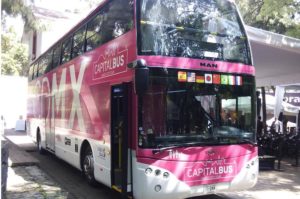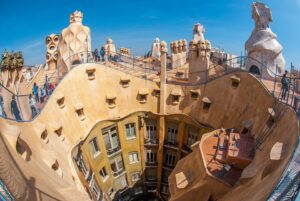
Mexico City has a vast overlay of cultures and centuries. Tall modern office buildings with hues of blue, pink, even bright red on navy, rise up next to tan and yellow colonial buildings, ancient stone statues, and modern sculptures. Toltec, Aztec,Spanish and modern images meet the eye in many places. Whether you enjoy exploring foreign cities with map and guidebook in hand as my husband Rob and I do, by taking organized day tours, or by hiring guides at your.hotel, peeling away the layers of this,complex international city is intriguing and fun. From early morning to late at night, the upbeat buzz of everyday rhythms blends with the quiet murmuring of the centuries.
The double decker, hop-on-and-off Turibus is https://tinyurl.com/ybwrymwz one of the best ways to get a sense of the city’s grand layout. From seats on the open second floor you look down to wide tree-lined avenues graced with fountains, sculptures, and squares, many of the older ones with Italian or French influences. It takes a route east and west from the Zocalo, the main square and center of the historic district, passes through the Zona Rosa and Polanco–the newer hotel, restaurant, and financial districts–and begins circling back at Chapultepec Park with its museums and lakes.
On its return, the bus dips south into Condesa, a newer Art Deco neighborhood with many galleries and cafés. Inspired by the Champs-Élysées in Paris, Hapsburg Emperor Maximilian, ruler of Mexicoin the mid-1860s, built the route from the Zocalo to Chapultepec Park so he could move easily from the castle to his office in the Zocalo. . Read Article.

